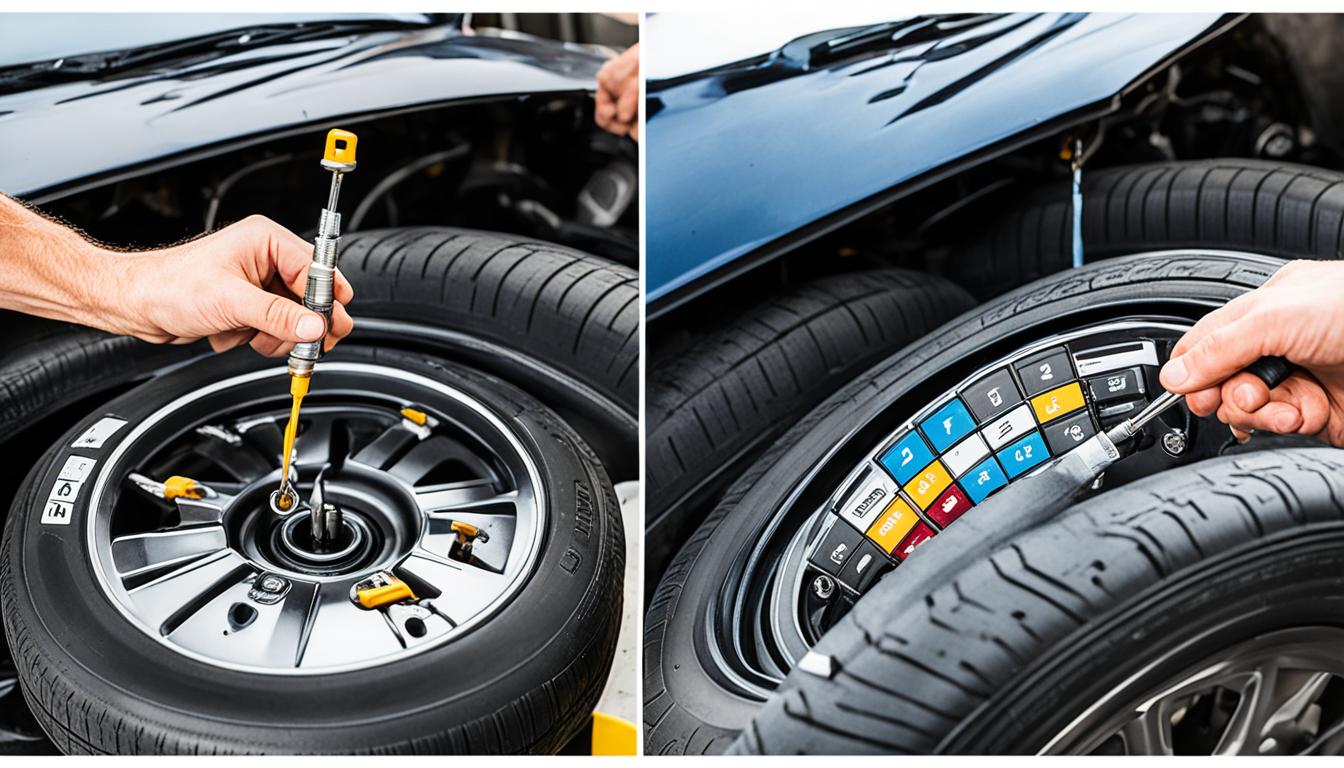All Categories
Featured
Tire rotations are one of the most basic yet most efficient maintenance jobs to ensure your automobile runs smoothly and securely. This regular service rearranges tire wear, providing many advantages for your vehicle's performance, safety, and your pocketbook.
What Does Tire Turning Involve?
Tire rotation is the procedure of periodically changing the placement of each tire on your car. Front tires may be exchanged with rear ones, or tires might be moved diagonally. The specific pattern depends on variables like your vehicle's drivetrain (front-wheel, rear-wheel, or four-wheel drive) and the kind of tires you have.
![]()
Why Tire Rotations Are Essential
Promotes Also Walk Wear. Various tires birth various quantities of weight and tension relying on their setting. Front tires commonly use quicker since they deal with braking and guiding. Routine rotations balance out the wear, making sure all 4 tires have comparable tread depths.
Extends Tire Life Expectancy. Uneven wear brings about early tire substitutes. Turning your tires can extend their life expectancy, conserving you cash over time.
Improves Vehicle Performance. Well balanced tires boost stability, handling, and traction. Whether you're collaring, stopping, or driving on unsafe roadways, uniformly worn tires guarantee a smoother and more secure driving experience.
![]()
Boosts Fuel Effectiveness. Tires with irregular tread wear can develop extra rolling resistance, which makes your engine work harder and consumes a lot more gas. Normal turnings help maintain optimal gas efficiency.
Guarantees Safety And Security. Used tires can compromise stopping distance and control. By rotating your tires, you preserve even use and lower the threat of blowouts or skidding.
Just How Commonly Should You Rotate Your Tires?
Specialists advise turning your tires every 5,000 to 7,500 miles. A convenient strategy is to pair tire turnings with oil modifications. Nevertheless, constantly consult your lorry's proprietor handbook for particular guidelines.
Typical Rotation Patterns
Rotation patterns rely on your lorry's drivetrain and tire type:
Front-Wheel Drive (FWD): Front tires transfer to the rear, and back tires cross to the front.
Rear-Wheel Drive (RWD): Back tires relocate to the front, and front tires go across to the rear.
All-Wheel Drive (AWD): Tires adhere to an "X" pattern to ensure well balanced wear.
Directional Tires: These tires should remain on the very same side of the automobile and are switched front to back.
Indications Your Tires Required Rotation
Unequal tread wear.
![]()
Decreased fuel efficiency.
Resonances while driving, specifically at broadband.
Trouble taking care of the vehicle in negative weather conditions.
Final Ideas
Tire turnings are a very easy means to secure your investment and boost your driving experience. By redistributing wear, you can expand the life of your tires, enhance fuel performance, and guarantee your safety and security when traveling. Set up regular tire turnings with a trusted auto mechanic and make it a consistent component of your lorry's upkeep regimen.
What Does Tire Turning Involve?
Tire rotation is the procedure of periodically changing the placement of each tire on your car. Front tires may be exchanged with rear ones, or tires might be moved diagonally. The specific pattern depends on variables like your vehicle's drivetrain (front-wheel, rear-wheel, or four-wheel drive) and the kind of tires you have.

Why Tire Rotations Are Essential
Promotes Also Walk Wear. Various tires birth various quantities of weight and tension relying on their setting. Front tires commonly use quicker since they deal with braking and guiding. Routine rotations balance out the wear, making sure all 4 tires have comparable tread depths.
Extends Tire Life Expectancy. Uneven wear brings about early tire substitutes. Turning your tires can extend their life expectancy, conserving you cash over time.
Improves Vehicle Performance. Well balanced tires boost stability, handling, and traction. Whether you're collaring, stopping, or driving on unsafe roadways, uniformly worn tires guarantee a smoother and more secure driving experience.

Boosts Fuel Effectiveness. Tires with irregular tread wear can develop extra rolling resistance, which makes your engine work harder and consumes a lot more gas. Normal turnings help maintain optimal gas efficiency.
Guarantees Safety And Security. Used tires can compromise stopping distance and control. By rotating your tires, you preserve even use and lower the threat of blowouts or skidding.
Just How Commonly Should You Rotate Your Tires?
Specialists advise turning your tires every 5,000 to 7,500 miles. A convenient strategy is to pair tire turnings with oil modifications. Nevertheless, constantly consult your lorry's proprietor handbook for particular guidelines.
Typical Rotation Patterns
Rotation patterns rely on your lorry's drivetrain and tire type:
Front-Wheel Drive (FWD): Front tires transfer to the rear, and back tires cross to the front.
Rear-Wheel Drive (RWD): Back tires relocate to the front, and front tires go across to the rear.
All-Wheel Drive (AWD): Tires adhere to an "X" pattern to ensure well balanced wear.
Directional Tires: These tires should remain on the very same side of the automobile and are switched front to back.
Indications Your Tires Required Rotation
Unequal tread wear.

Decreased fuel efficiency.
Resonances while driving, specifically at broadband.
Trouble taking care of the vehicle in negative weather conditions.
Final Ideas
Tire turnings are a very easy means to secure your investment and boost your driving experience. By redistributing wear, you can expand the life of your tires, enhance fuel performance, and guarantee your safety and security when traveling. Set up regular tire turnings with a trusted auto mechanic and make it a consistent component of your lorry's upkeep regimen.
Latest Posts
Check Out Outstanding Car Repair Care from Montclare Auto Repair – Keep Your Car Running Smoothly
Published May 24, 25
1 min read
Discover the Best Auto Repair Coupons in Montclare, Chicago
Published May 23, 25
1 min read
Discover WyHy FCU – The Key to Superior Financial Services in Wyoming
Published May 22, 25
1 min read
More
Latest Posts
Check Out Outstanding Car Repair Care from Montclare Auto Repair – Keep Your Car Running Smoothly
Published May 24, 25
1 min read
Discover the Best Auto Repair Coupons in Montclare, Chicago
Published May 23, 25
1 min read
Discover WyHy FCU – The Key to Superior Financial Services in Wyoming
Published May 22, 25
1 min read